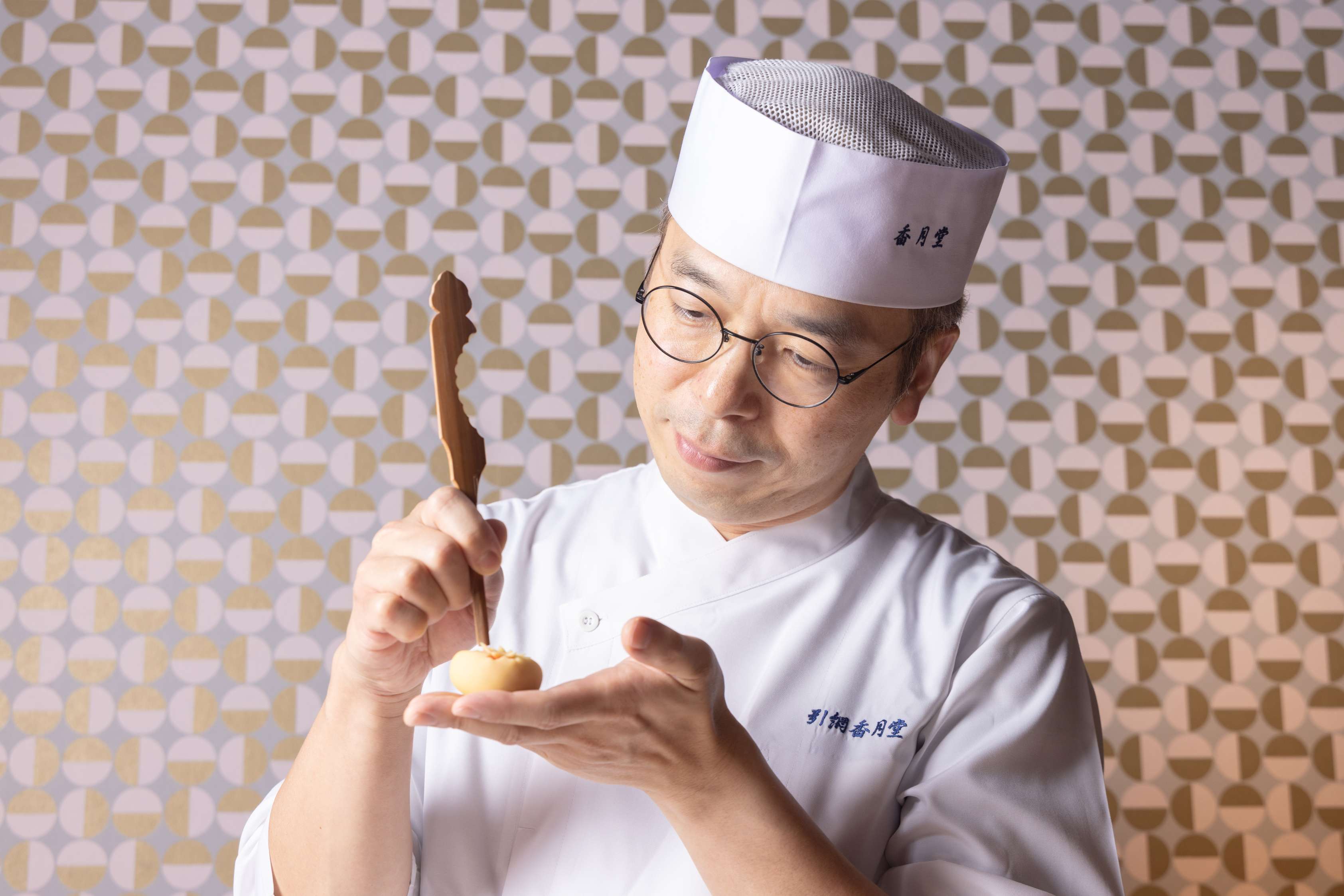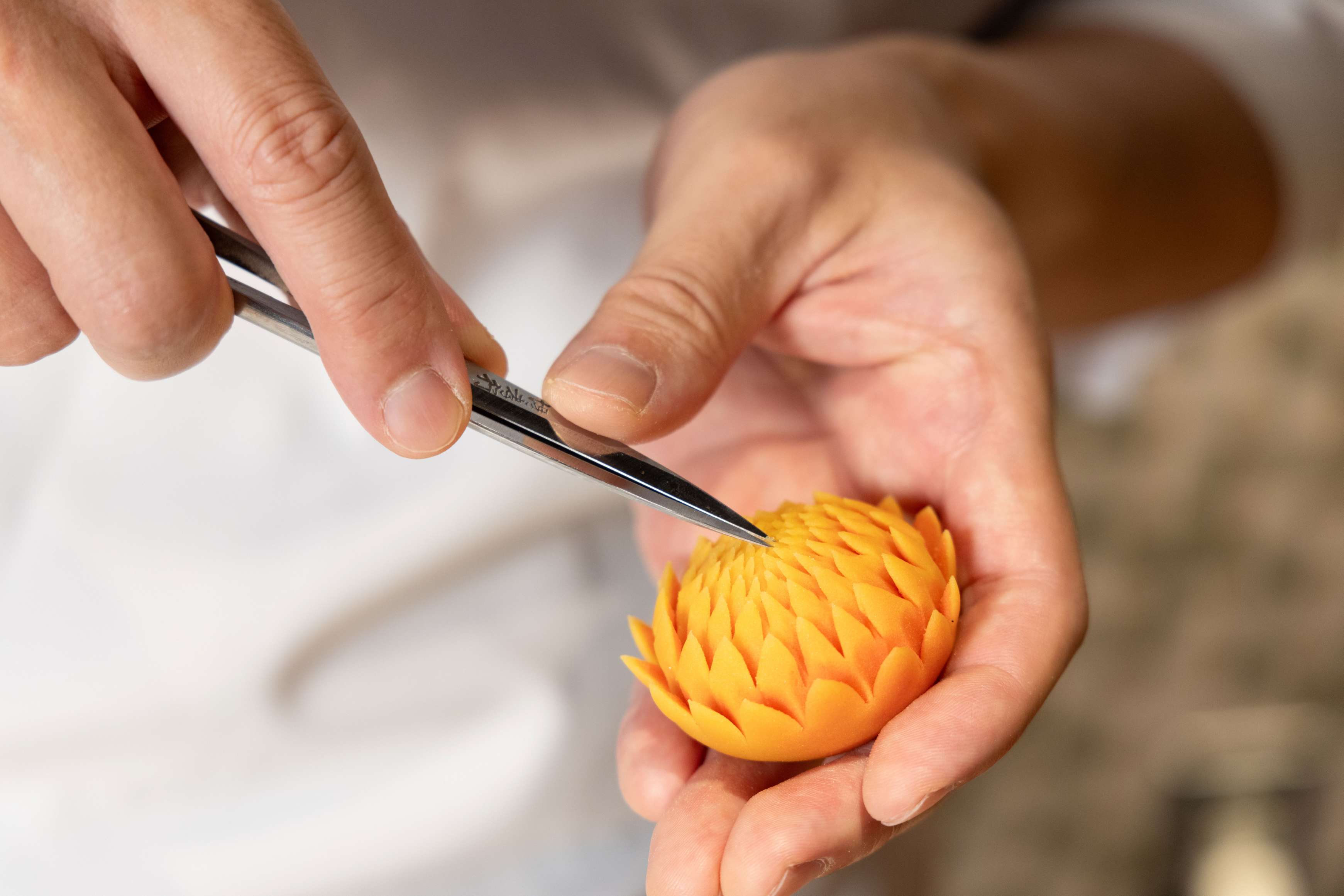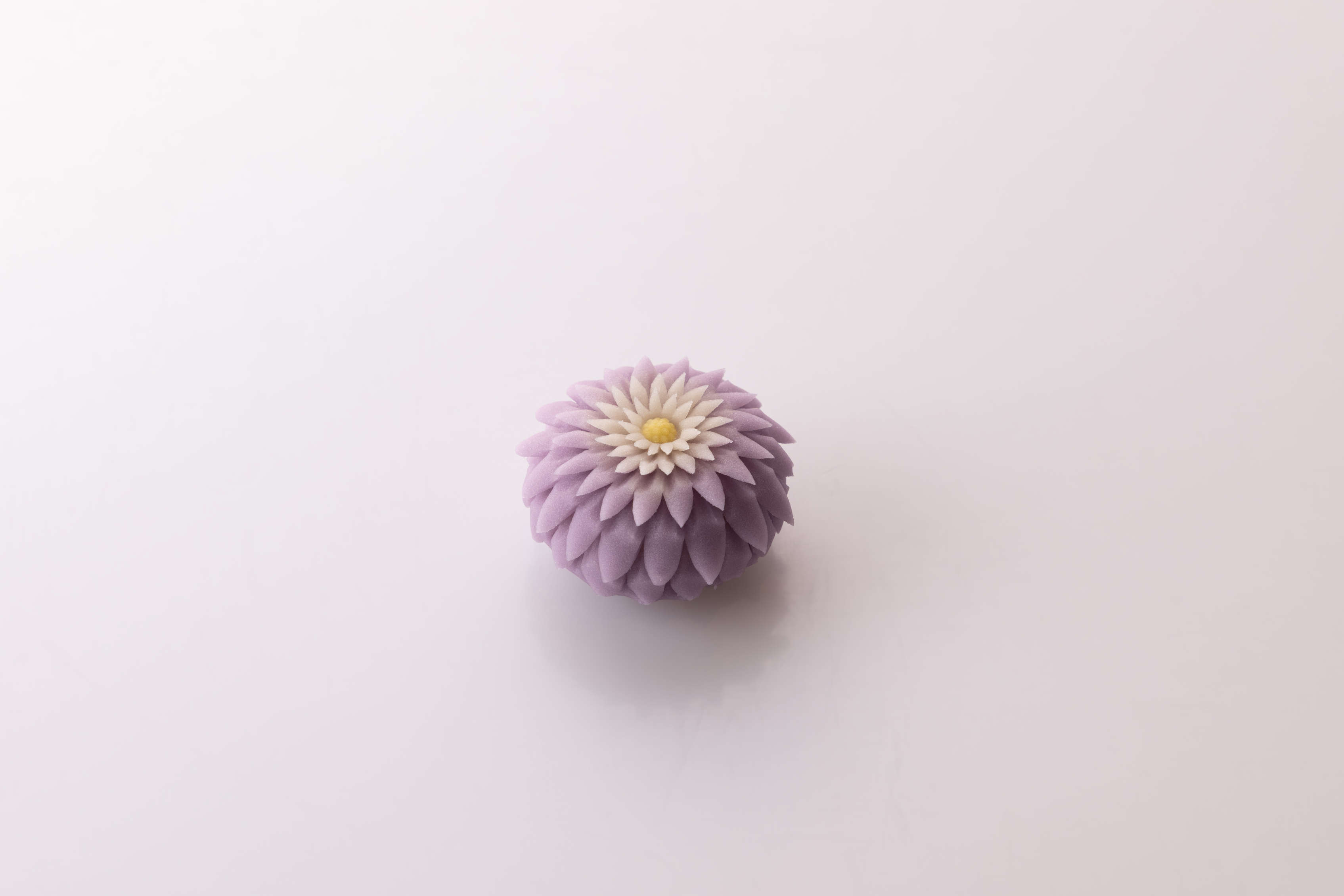
Early in November, across a variety of locations in London, the Toyama Week event was held. Showcasing the beautiful craft and food of the prefecture, we got a taste of Japan, and a preview of all the things that Toyama has to offer. From a sake dinner to craft pop-up, the charm of Toyama was out for all to see!
One popular aspect of the week was having the wagashi chef Yasuhiro Hikiami visit to conduct workshops on wagashi at Japan House, and his own wagashi pop-up at Pantechnicon, where he took live orders from customers, making wagashi on the spot.
Chef Hikiami was kind enough to sit down with us and answer a couple of questions about both wagashi and his experience in London!

Hello! Thank you for joining us. To start us off, could you please give us a short introduction of yourselves? How did you get into the art of wagashi?
My name is Yasuhiro Hikiami, and I’m a wagashi chef from Hikiami Kogetsudo. I was born as the 4th generation of wagashi craftspeople, and have been surrounded by the craft of wagashi since I was young. My father was also a wagashi chef, when I was a kid I would always wander around the shop.
One reason I see as a factor for why I got into wagashi was when I met my teacher. I watched my teacher work up close, and seeing all the work involved, that inspired me to not work half-heartedly on anything, it set my heart to put my all into the wagashi craft.
For those who are unfamiliar, how do you explain what wagashi is?
There’s always a lot of talk about French confectionery, English confectionery, Italian confectionery and others, and I think there was a combination of the unique culture in Japan that produced wagashi, a sort of unique evolution of candy. The basic ingredients are beans, rice, and Japanese yam. Wagashi is also aligned with seasons or other events, something that is a bit different from other country’s confectionery.

What is wagashi to you?
As a wagashi chef, wagashi is work of course, we have our own shop among other things. While it is my work, it is also my hobby, the two things are kind of stacked upon each other. I think that it is fun to do, essentially a way of expression. It is also a way of communicating with someone. You make the wagashi, put them in a box, and see people take good care of it. I think that it is very much a means of expressing yourself.
Where do you see wagashi in the future?
There are a few new trends going on, but there are lots of people that see wagashi as a rather old tradition, and that can make them not want to eat it. The term “wagashibanare” has appeared recently, a word meaning that there is a shift away from traditional confectionery. Wagashi may not necessarily align with the current age. Over the past 10 years or so, with the advent of social media platforms, it has become important to have good name recognition. I’ll talk with customers about confectionery at my store and suggest specific types to them. Similarly to what happened in London this time around, there are times where it may be less the store that is recognised, but the person running the store. It seems that we’re going towards a time where it’s less the restaurant recognition but more of the recognition of the chef that is just as important. I’m also very excited to see the many different representations of wagashi as well.
Why is seasonality such an important factor in wagashi?
When people come to Japan, even if they stay in similar areas, the views they receive are very different depending on the seasons. There are differing events as well during each season and time such as festivals and other happenings. With winter approaching, the snow beginning to fall, you think of campfires, snow designs, and other things. There is a sort of expectation for the future, almost seeing a bit ahead. The wagashi can remind customers of the approaching seasons and events, like a positive representation of the near future. Similarly with spring and the cherry blossoms, you can get a reminder of what’s to come.

Can you briefly explain the connection that wagashi has with tea ceremonies?
Within the tradition of tea ceremonies, you have the image of drinking tea, eating confectionery, all at a place especially designed for the ceremony. There is the tea room, a landscape garden, certain alcoves adorned with decorations such as hanging scrolls and calligraphy. You can also find pottery and bowls, and then there is also wagashi.
During a tea ceremony, while you have a sense of freedom to choose decorations, performance, and other elements of the event, it is expected that everything is set by the time preparation for the ceremony comes around. When making wagashi, you think in accordance with the harmony of the participants, and you draw on this to make the proper candy. All the wagashi for tea ceremonies are made-to-order. I think that wagashi is rooted in the deep history of the tea ceremony.
What is one of your favourite wagashis to make?
Nerikiri (made of white bean paste and rice flower) is one that I like to make, but also the many made-to-order ones, such as I did during my time in London. I was asked by customers on the spot and then visualised what I would make before creating the design. It is a little dangerous to be taking orders this way, but it is very fun. It’s a form of communication, you’ve got the customer and the chef, and then the wagashi in between them. You get the order, you think about it, make the candy, it’s almost like a game of catch, it is quite fun.
The ones that you make and line up in a shop are also quite important, but some of the most fun ones I do are when I take orders from the counter. You can see the reaction of the customer firsthand as well. You normally are just making the candy, lining it up in your store and selling it, but when you do bespoke or made-to-order designs, there’s an aspect of fun in it. There were a lot of people at the event during Toyama Week, some people were even waiting for 2 hours!
The orders depended on the person, but some things that people requested were about memories, cherished objects, pets, anniversaries, and wedding anniversaries, those definitely leave a mark on me. Seeing them come with their partner together, seeing their reactions, I also felt the happiness as well.

What is a proud moment you’ve had as a wagashi chef?
I was very proud working on the order made wagashi recently, but another moment is about my store and showing people around. Our new store opened 6 years ago, and I remember when I first opened the door to everyone, and there was a huge amount of people already queuing to enter. All the people were clapping for me and I nearly cried. That these people were thinking of me that much, that they would wait in such a long line for me, it was an amazing moment.
Thank you for talking with us!

You can find out more about Hikiami Kogetsudo at their website here!
For anyone interested in visiting Toyama Prefecture, you can find their official tourism website here!
Make sure to follow us on Facebook, Instagram, and Twitter for the latest from Japan!

















































